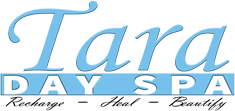[title size=”2″]TMD/TMJ –What you may not know[/title]
Although it is commonly called TMJ, that term actually means Temporomandibular Joint – or your jaw joint. The more accurate term is TMD or Tempormandibular Disorder, and that refers to a broad array of symptoms that can arise from an issue in how the lower jaw functions and rests.
The symptoms number in the hundreds and don’t all affect people equally and has made accurate and consistent diagnosis of the condition very difficult and in fact, poorly understood by the dental profession as well as physicians and other health care modalities.
Some common symptoms include:
- ‘Migraine’ pain
- Facial pain
- Jaw joint pain
- Back, neck, cervical pain
- Postural problems (forward head posture)
- Pain in the face
- opening of the mouth (commonly known as “Locked Jaw”)
- Headaches (tension type)
- Pain in the muscles surrounding the temporomandibular joints
- Pain in the occipital (back), temporal (side), frontal (front), or sub-orbital (below the eyes)
- Pain behind the eyes – dagger and ice pick feelings
- Multiple bites that feels uncomfortable or, “off,” and continually changing
- Clenching/bruxing
- Tender sensitive teeth to cold
- Deviation of the jaw to one side
- The jaw locking open or closed
- Ringing in the ears, ear pain, and ear congestion
- Sinus like symptoms
- Dizziness or vertigo
- Visual Disturbances
- Tingling in fingers and hands
- Insomnia -difficulty sleeping
Hidden underneath these symptoms are generally a negative impact on the blood flow to the brain as well as diminished airway and often night-time sleep problems.
[tabs tab1=”What is NMD” tab2=”is this TMD?” tab3=”Migraines”]
[tab id=1]
[fontawesome icon=”random” circle=”yes” size=”large”]What is Neuromuscular Dentistry (NMD)
The way that your upper and lower teeth come together (your bite or occlusion) is part of a system of teeth, muscles and joints. If your teeth do not fit together properly (misaligned bite), the muscles and joints accommodate – work to get them together.
A misaligned bite often leads to muscles that are overworked when they should be relaxed, leading to various painful conditions. Neuromuscular dentistry considers the
entire system that controls the positioning and function of your jaw. The neuromuscular dentist seeks to establish a physiologic jaw position based on a harmonious relationship of the three main factors affecting occlusion – the teeth, muscles and jaw joints. The resulting jaw position is called the neuromuscular bite.
[/tab]
[tab id=2][fontawesome icon=”thumbs-up” circle=”yes” size=”large”]Most people don’t think to mention the pain in their facial muscles or jaw joints to their dentists. Yet such pain is a common symptom of TMD (Temporomandibular Disorders) or otherwise known as TMJ. TMJ refers to temporomandibular joints but it is also a common name for a disorder that affects the facial muscles and joints that connect the lower jaw to the skull. A more recent designation for this condition is TMD (Temporomandibular Disorders).This condition causes pain on both sides of the forehead and sometimes in the neck as well. Other symptoms of TMD may include jaw pain, biting or chewing difficulty or discomfort, reduced ability to open or close the mouth and popping/clicking of the jaw joints during opening and closing. The National Institute of Health estimates that 5 to 10 percent of Americans suffer from TMD severe enough to warrant treatment. TMD can be caused by tension in the muscles that move the jaw, the way your upper and lower teeth fit together (bite) or in some cases the jaw joints. Any problem that prevents this complex system of muscles, teeth and joints from working properly may result in TMD.
There are many possible causes of TMD. The Neuromuscular Dentist is trained and equipped to diagnose and treat your TMD condition. Non-invasive tests can aid your dentist to determine whether or not muscle tension, your bite or your jaw joints may be the cause of your TMD and whether treatment by a dentist might resolve your condition. If you suffer more than an occasional pain in the facial, jaw or neck area, it is well worthwhile to talk to a Neuromuscular Dentist about it..
[/tab]
[tab id=3][fontawesome icon=”magic” circle=”yes” size=”large”]Following are a few of the more common symptoms that may possibly be associated with your TMD. If you have one or more of them, you should visit a dentist with special training in the filed of TMD.
Pain in the muscles that control jaw function
Jaw pain or tenderness of the jaw
Pain in the face or neck Biting or chewing difficulty or discomfort
TMJ pain
TMJ noise during opening or closing of the jaw
Limited opening or locking of the jaw
A change in the way the upper and lower teeth fit together
Teeth Grinding Pain in and around the ear without infection
Sensitive teeth when no dental problems can be found
[/tab]
[/tabs]
